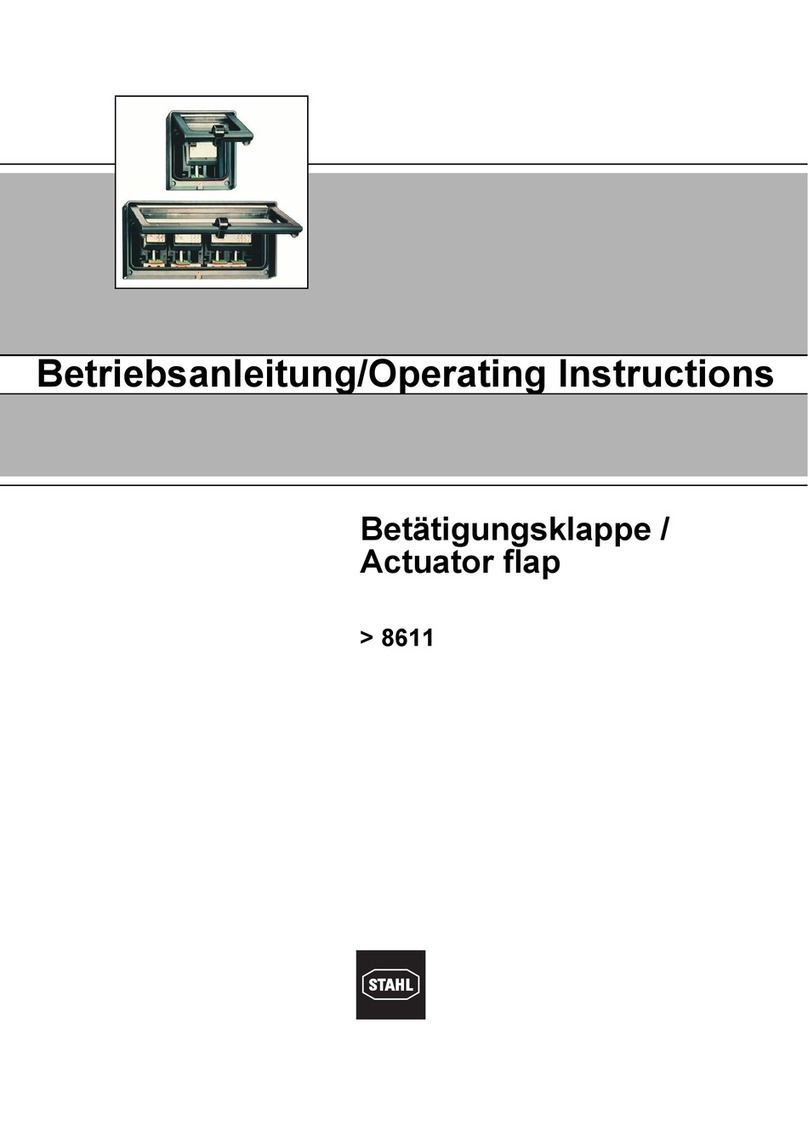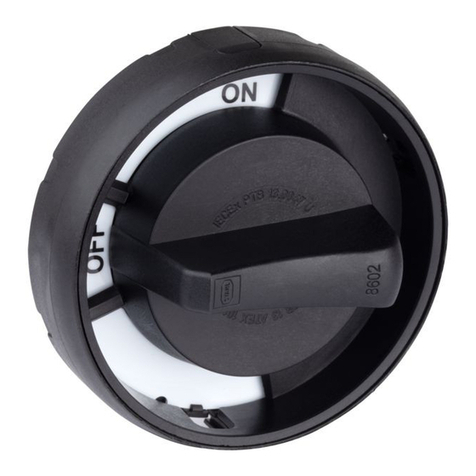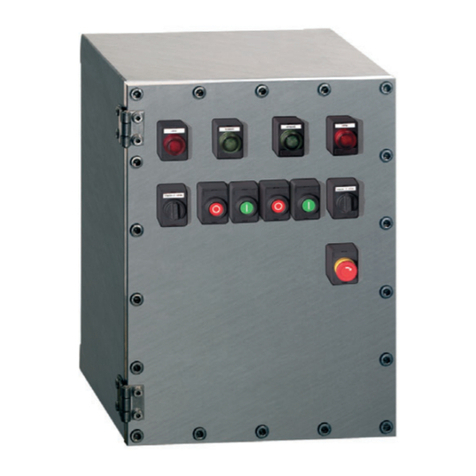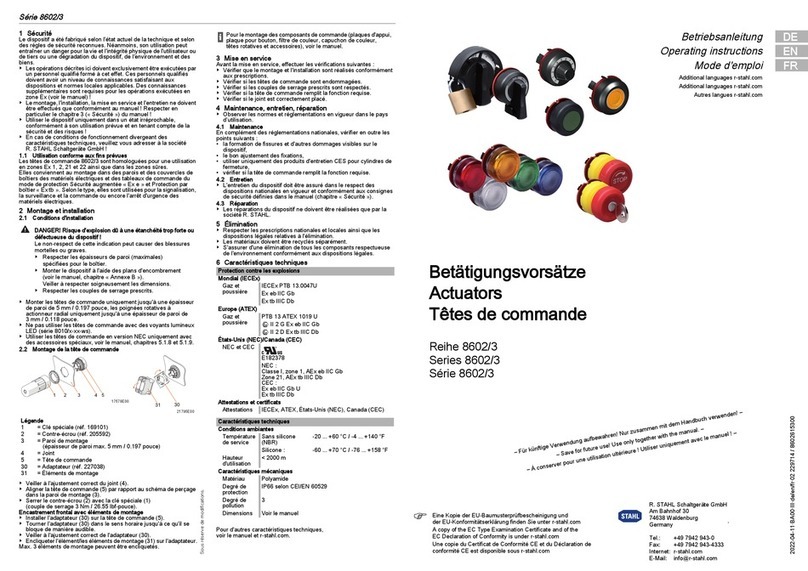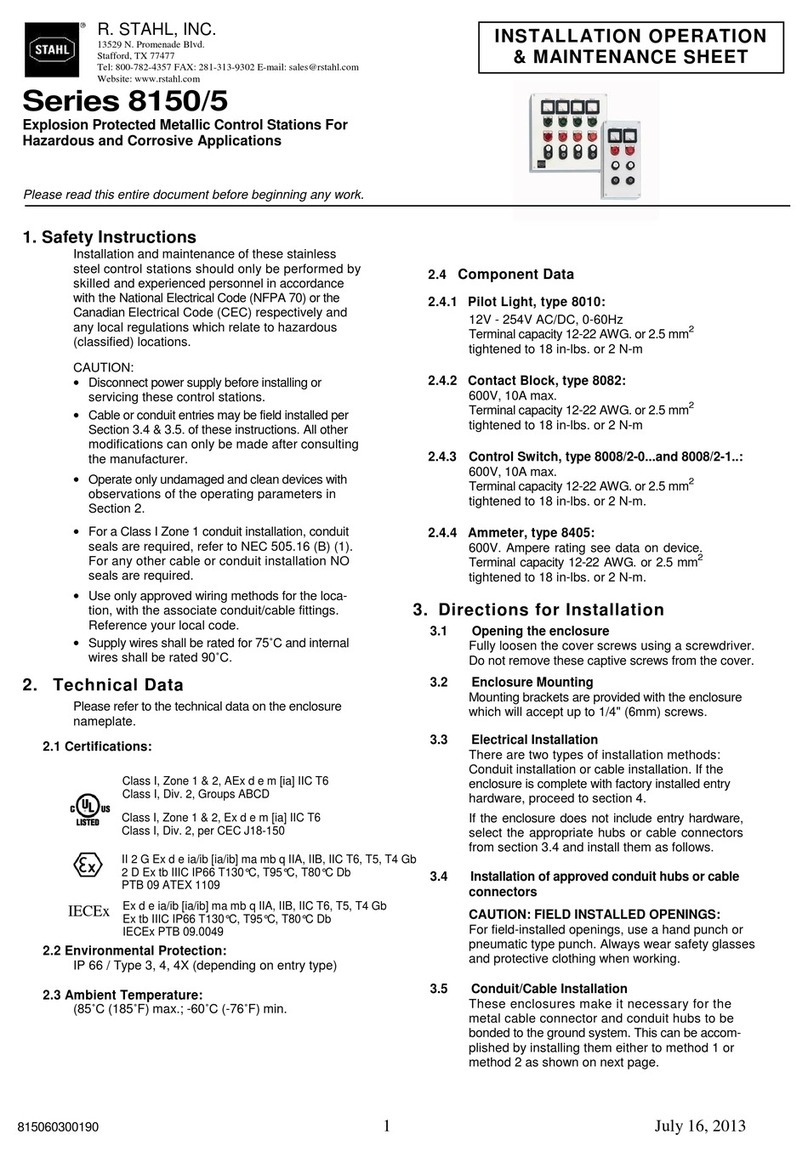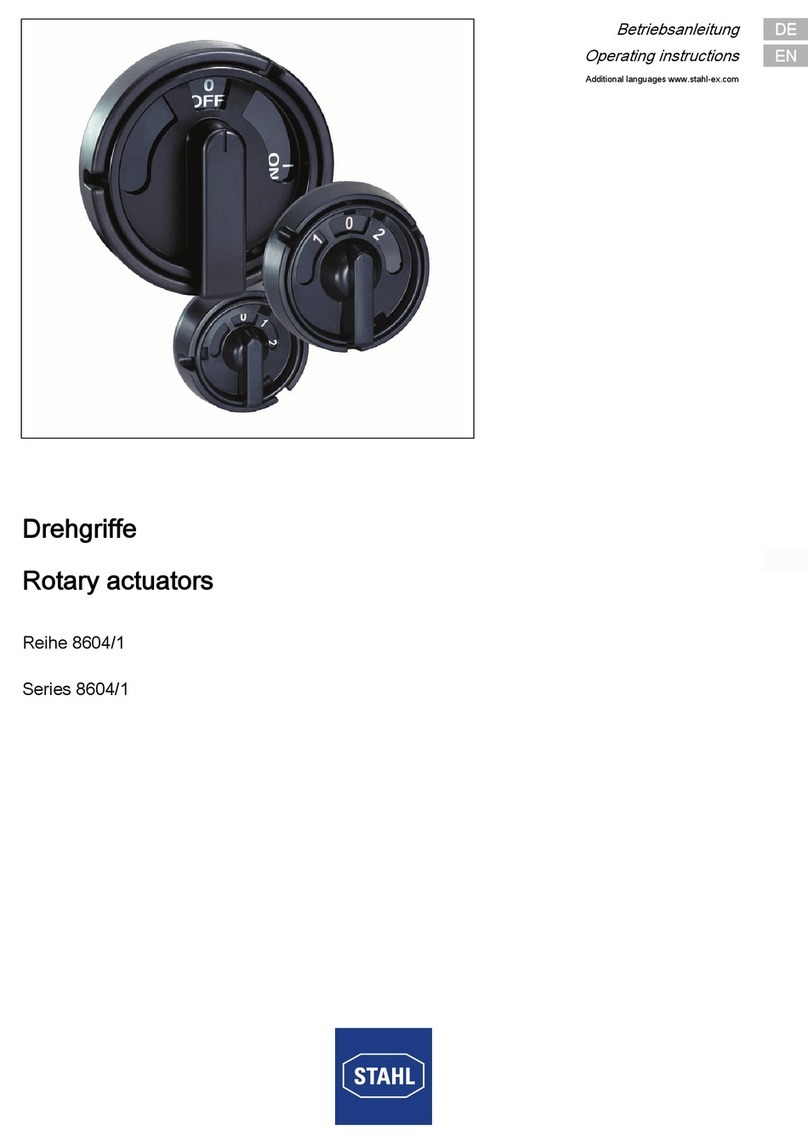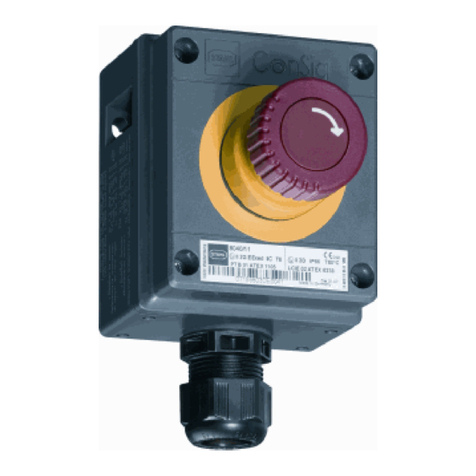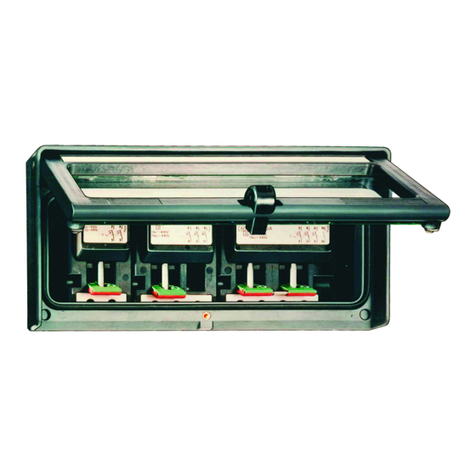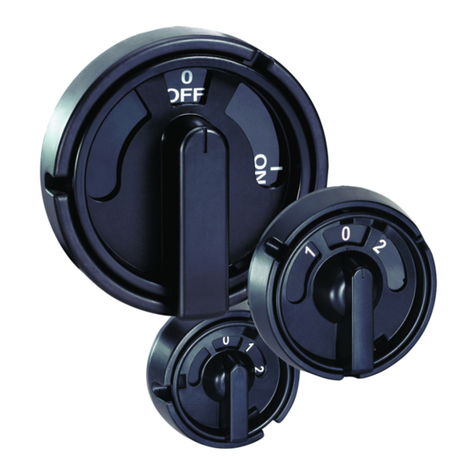
F-PI-1.0-SSC-06.04, SSC1-Version 1.08
pissc1
9
Schalteingang "dis"
Ein Tastimpuls von min.100 ms am Eingang be-
wirkt, dass zum nächsten Anzeigewert auf der
großformatigen Lastanzeige weitergeschaltet
wird, sofern eine Lastanzeige angeschlossen
ist und mehrere Anzeigewerte programmiert
wurden (siehe auch Lastanzeige S.28).
Schalteingang "tar "
Ein Tastimpuls (min. 100 ms) am Eingang tar
bewirkt die Tarierung der Anzeigenwertes
auf der Lastanzeige. Bei der Konfiguration
durch das PC-Programm wird festgelegt ob
und welcher Anzeigewert tariert wird. (siehe
auch Lastanzeige S.28)
Der Schalteingang "tar" wird auch zur Über-
brückung der Schlafseilerkennung genutzt.
Ist die Funktion Schlaffseil konfiguriert und
es wurde Schlaffseil erkannt, wird durch das
Ansteuern des Einganges "tar" das dazuge-
hörige Relais für die Schlaffseilabschaltung
wieder eingeschaltet.
Schalteingang "cra"
Ein Signal an Klemme cra aktiviert den Mo-
dus Kranprüfung. In diesem Modus werden
die Überlastschwellen um 25% erhöht.
Wenn der Modus Kranprüfung aktiviert ist,
blinkt die rote LED am SSC1. Der Modus
Kranprüfung wird nach Aktivierung durch
Ausschalten des Gerätes oder automatisch
nach 30 min beendet.
Hinweis: Der Modus Kranprüfung kann auch
durch Software aktiviert werden.
Relaisausgänge K1 - K4
Es stehen vier potenzialfreie Relaisaus-
gänge zur Verfügung. Es ist jeweils der Öff-
ner und der Schließer-Kontakt nach außen
geführt. Im Fehlerfall wird das Relais vom
SSC-Ausgang nicht angesteuert, damit ist
der Schließerkontakt (z.B. bei K1 Klemme 13
und 14) geöffnet. Die Bedeutung der Aus-
gänge ergibt sich aus dem konfigurierten
Betriebsmodus (siehe Seite 12).
Optionale Relais Option 1 - Option 3
Die Relais Option1 (Klemmen 25/26/27) und
Option2 (Klemmen 28/29/30) sind zur Ausga-
be von Meldungen (Fehler oder Warnun-
gen) vorgesehen. Über die Geräteprogram-
mierung kann dabei die Art der Meldung
festgelegt werden (siehe S.26).
Über Option3 (Klemmen 31/32/33) werden Sy-
stemfehler, die vom SSC1 erkannt werden,
ausgegeben. Bei Systemfehler werden die
Relais K1...K4 abgeschaltet und das Relais
Option3 angesteuert. Um die Sicherheit der
Gesamtanlage zu erhöhen, wird empfohlen,
das Meldesignal des Option3 Relais in die
Elektrischer Anschluss SSC1
Electrical connection of SSC1
dis tar cra
L
SSC1
567
13 14 15
K1
SSC1
"dis" switching input
A pushbutton pulse of min. 100 ms at the
input causes the large-format display to
be switched to the next display value as
long as a load display is connected and
more than one display value was pro-
grammed (see also load display, page 28).
"tar" switching input
A pulse of min. 100 ms at the tar input
tares the display value on the load
display. Configuring with the PC program
determines whether and which display
values are tared (see also load display,
page 28).
The "tar" switching input is also used to
bridge the slack rope detection function. If
the slack rope function is configured and
slack rope is detected, activating the "tar"
input switches the corresponding relay for
slack rope cut-off on again.
"cra" switching input
A signal at the cra terminal activates the
crane test mode. In this mode the
overload threshholds are increased by
25%. The red LED on the SSC1 flashes
when the crane test mode is activated.
The crane test mode is ended by switching
off the device or automatically after 30 min.
N.B.: The crane test mode can also be
activated via the software.
K1 - K4 relay outputs
Four isolated relay outputs are available. The
n.c. and the n.o. contacts are run out on all. If
there an error occurs, the relay is not
activated by the SSC output, thus the n.o.
contact (e.g. for K1 terminal 13 and 14) is
open. The significance of the outputs is
determined by the operating mode
configured (see page 12).
Optional relays Option 1 - Option 3
The Option 1 relay (terminals 25/26/27)
and Option 2 relay (terminals 28/29/30)
are intended for emitting signals (errors
or warnings). The type of signal can be
determined when programming the
device (see page 26).
System errors detected by the SSC1 are
output by the Option3 relay (terminals 31/
32/33) In the case of system errors, relays
K1...K4 are turned off and the option 3
relay turned on. We recommend
integrating the signal of the option 3 relay
into the overall control to increase the


